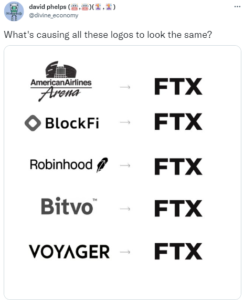Ivan Ndip at Fraunhofer Institute
The starting gun for the next generation of mobile communications has already been fired. “With 6G, we have the ambitious goal of achieving a terabit per second and a latency of about 100 microseconds – that is, 50 times the data rate and one tenth the latency of 5G”, says Ivan Ndip, an ex-pert in antennas and radio frequency systems at the Fraunhofer Institute for Reliability and Micro-integration (IZM) in Berlin. 5G currently yields data rates of up to 20 gigabits per second at a latency of around one millisecond.
Ndip and other experts are convinced that many areas of Industry 4.0, such as medicine, autonomous driving, smart cities, and entertainment, will benefit greatly from new 6G appli-cations – but they also warn of new challenges.
50 times the data rate of 5G and one-tenth of its latency.
Ivan Ndip, Expert at Fraunhofer IZM

Ndip explains the difference using the example of autonomous driving, where one of the goals is to greatly reduce the number of accidents. “Autonomous driving is primarily a collective aspect”, Ndip says. “What 5G will achieve is a maximum data rate of about 20 gigabits per second. When a car is driving autonomously, it needs to communicate its position to other road users in real time, it needs to be able to measure distances and look around 360 degrees at the same time. It must also know the road very well and be able to look into the distance but, of course, also very close and very precisely.
“This requires sensors, which we are also developing at Fraunhofer IZM: a combination of radar and camera,” he adds. “These sensors collect an enormous amount of data which must be shared simultaneously. But uploads and downloads also have to take place in real time. For example, city maps are downloaded in very high resolution – 20 gigabits per second is nowhere near enough for all these processes. In addition, the cars must react reliably to unexpected circumstances, with extremely little delay, autonomously. Therefore, in addition to very high data rates, very low latency is required at the same time Unfortunately, 5G does not allow infrastructures and networks to be built that simultaneously guarantee hundreds of gigabits per second and extremely low latency. Ndip does not believe that true autonomous driving will be possible with 5G. “We don’t even know if the specifications we have today for 5G will be met. The necessary collective or networked intelligence doesn’t yet exist. 5G doesn’t allow the data rates and latency needed for this. That’s why we need 6G.” Ndip believes it is important that telcos and governments are already looking at 6G today, even though it is not expected to be introduced until 2030. He says there are still many unanswered questions – such as hardware development for mobile communications above 100 GHz, as it is expected that the D-band (0.11 THz to 0.17 THz) will likely be used.
D-band frequencies have never been opened before for mobile communications, so the research and development community would have to start much earlier to address hardware and software issues for applications. Ten years before launch would be desir-able, he says, to allow specifications to be established about five years before launch, giving time for trials to follow. There is still a lot of work for researchers like Ndip to do before the public can enjoy the benefits of the next generation of wireless communications.
The Smart People 1/2021
Source: https://www.smart-industry.net/fraunhofer-urges-early-start-for-6g/
- 100
- 11
- 5G
- All
- applications
- around
- autonomous
- berlin
- car
- cars
- Cities
- City
- Communications
- community
- data
- delay
- Development
- distance
- driving
- Early
- Entertainment
- experts
- follow
- Giving
- Governments
- Hardware
- High
- HTTPS
- Hundreds
- industry
- Intelligence
- issues
- IT
- launch
- Maps
- measure
- medicine
- millisecond
- Mobile
- Near
- networks
- Other
- People
- public
- radar
- Radio
- Rates
- React
- reduce
- research
- research and development
- sensors
- shared
- smart
- Smart Cities
- So
- Software
- start
- Systems
- Telcos?”
- time
- users
- wireless
- Wireless Communications
- Work
- years




